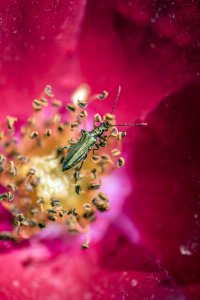
Pollen Count
Here at Allergy & Clinical Immunology, we post the daily pollen counts during pollen seasons as provided by the National Allergy Bureau. But did you ever stop to think about what is involved in obtaining a pollen count???
Pollen counts are generated by measuring the number of grains of pollen in a given volume of air in a set time period (usually 24 hours). These numbers are averages, and actual pollen and mold exposure may be greater, depending on the time of day that you are exposed. The pollen count represents pollen or mold samples taken in the previous 24 hours. Pollen counts change with the weather and the time of day. During pollen season, the count is never zero. Generally, the higher the pollen count, the greater risk of developing allergy symptoms.
According to the Asthma and Allergy Foundation, much pollen is released early in the morning, shortly after dawn. This results in high counts near the source plants. Pollen counts usually rise during the morning, peak about midday, and then gradually fall. So the lowest pollen counts are before dawn. If the pollen count is very high, a decrease later in the day may still leave a high concentration of pollen in the air. In urban areas, pollen counts tend to rise and fall later than in the suburbs. Grasses only release pollen in the morning from 6a.m. to 10 a.m. Peak pollen for other plants and trees tend to be midday and afternoon.
Some Fun Pollen Facts:
- Hot, dry, windy days generally mean more pollen and molds are in the air
- Rain tends to wash pollens out of the air
- Pollen counts fall during times of higher humidity and rise during low humidity. When humidity goes up, pollen grains absorb moisture, which makes them heavy enough to fall to the ground. During low humidity, water evaporates from the pollen grains, making them lighter and more easily airborne.
- The warmer the temperature, the greater the pollen. Warmer air encourages pollination, colder air discourages it.